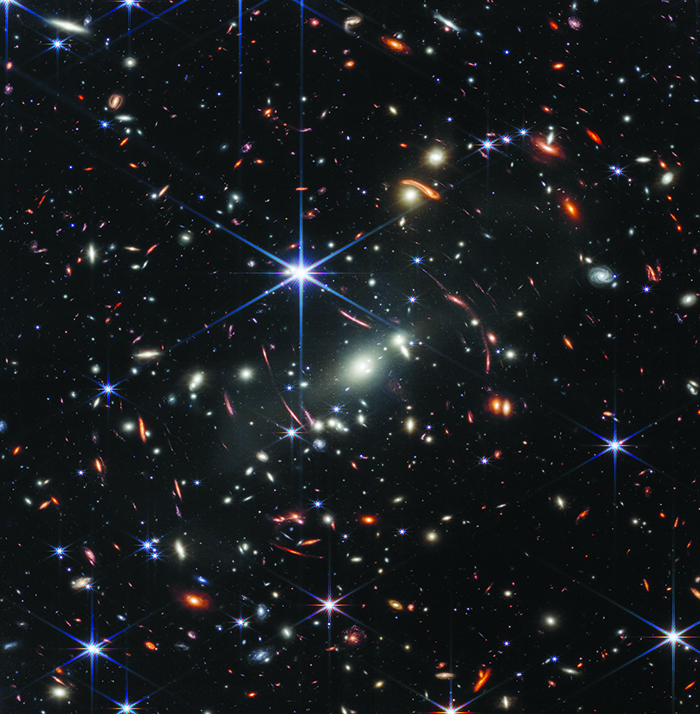The James Webb Space Telescope is up and running, and UChicago faculty are celebrating.

On July 11 NASA began releasing the first images from the James Webb Space Telescope, which is currently in orbit a million miles from Earth. This image peers across space and time, showing the faraway galaxy cluster SMACS 0723 as it appeared 4.6 billion years ago. The curved distortion around the center is caused by gravitational lensing, when something massive—in this case SMACS 0723 itself—turns a region of space into a magnifying glass. The phenomenon offers a glimpse of even farther galaxies, some seen when the universe was less than a billion years old.
Many UChicagoans are involved in Webb’s mission—among them associate professor of astronomy and astrophysics Jacob Bean, who will use the telescope to study exoplanets; professor of astronomy and astrophysics Hsiao-Wen Chen, who will study black holes; Wendy Freedman, the John and Marion Sullivan University Professor in Astronomy and Astrophysics, who hopes to learn more about how rapidly the universe is expanding; Michael Gladders, a professor of astronomy and astrophysics who will study the early universe; Alex Ji, an assistant professor of astrophysics who plans to search for the aftermath of a neutron star collision; and Kenneth Sembach, AB’88, director of the Space Telescope Science Institute, the nonprofit organization responsible for Webb’s flight and science operations. “Looking at these images,” Gladders told UChicago News, “reminds me why I’m in this business.”
